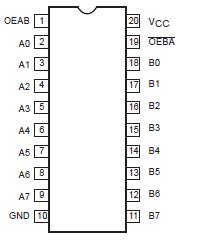74F620: Features: • High-impedance NPN base inputs for reduced loading (70mA in High and Low states)• Ideal for applications which require high output drive and minimal bus loading• Octal ...
floor Price/Ceiling Price
- Part Number:
- 74F620
- Supply Ability:
- 5000
Price Break
- Qty
- 1~5000
- Unit Price
- Negotiable
- Processing time
- 15 Days
SeekIC Buyer Protection PLUS - newly updated for 2013!
- Escrow Protection.
- Guaranteed refunds.
- Secure payments.
- Learn more >>
Month Sales
268 Transactions
Payment Methods
All payment methods are secure and covered by SeekIC Buyer Protection PLUS.

 74F620 Data Sheet
74F620 Data Sheet








